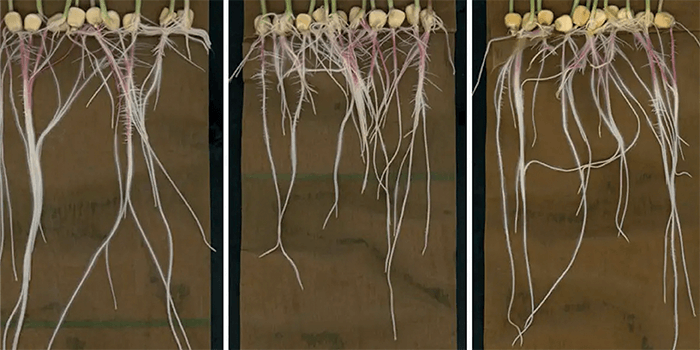
Digging deeper into how plants develop can help scientists learn more about organism growth – at least that's what researchers from the University of California, San Diego, and Stanford University are counting on. Specifically, the team has chemically mapped the development of maize roots to uncover new insights, with the aim of improving plant growth in the face of climate change.
Targeting specific areas of plant tissue, the team applied spray charged droplets to maize roots ahead of desorption electrospray ionization mass spectrometry imaging (DESI-MSI). The team found hundreds of small molecules with different spatial distribution patterns across the developing tissue, as well as different enrichment patterns and functions of citric acid cycle metabolites during root development.
“We were surprised by how many unidentified molecules are enriched in developing roots,” says Jazz Dickinson, a faculty member in the Department of Cell and Developmental Biology, University of California San Diego. “With this new information we can develop chemical and genetic strategies to control plant growth.”
Richard Zare at Stanford University, co-author of this study, emphasizes the importance of collaboration between the two universities. “I cannot emphasize enough the synergy of this study. I don’t have the background in plant biology to perform this analysis without Jazz and our coworkers. Combining this expertise with my experience with mass spec was crucial in providing a chemical spatial map of plant root development.”
In addition to applying the findings to plant growth, the teams are also exploring other avenues. Surgeons in the Dermatology Department of the Stanford University School of Medicine are hoping to extend the research from maize roots to human skin – allowing scientists to determine if skin blemishes are cancerous or benign before needing to perform a biopsy or undertake surgery. “The preliminary results of this project look quite promising – a triumph of interdisciplinary research that would’ve been impossible to approach alone,” says Zare.
It seems like we could see further applications of DESI-MSI in both nutritional and clinical settings. Dickinson remains hopeful for what the future holds, “This was a true collaboration, and I hope our work inspires others in such efforts!”
References
- UC San Diego “Groundbreaking images of root chemicals offer new insights on plant growth” (2023). Available at: http://bitly.ws/Rans.
- T Zhang et al., Chemical imaging reveals diverse functions of tricarboxylic acid metabolites in root growth and development (2023). DOI: 10.1038/s41467-023-38150-z.




